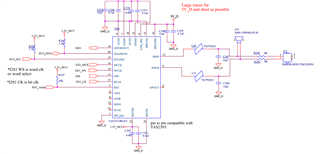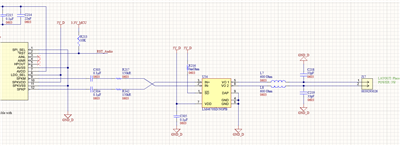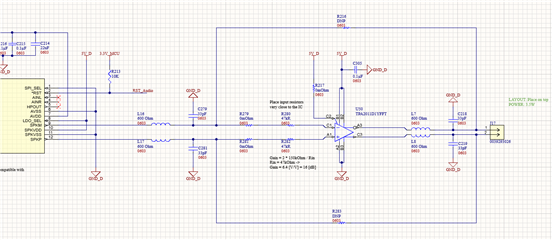Other Parts Discussed in Thread: LM4670, TPA2011D1
Hello,
I am trying to design a circuit using the TAS2521IRGET speaker amplifier with the LM4670SD/NOPB power amplifier.
In a previous design, we successfully used a circuit based only on the TAS2521, as can be seen in the next figure:

However, it turned out that the output power was too small for our needs and we decided to add the LM4670 as an additional amplifier to the circuit.
So the new circuit consist of the TAS2521, that is controlled by the MCU through I2S protocol, which is driving LM4670's input. The speaker is then connected to LM4670's output, as described in the next figure:

C303, C304, R217 and R342 were chosen according to Figure 32 in LM4670 datasheet. L7, L8, C218, C219 were left from previews design.
Now, I was reading this threat - LM4670: LM4670SD/NOPB Can't output Sound and it looks like that after implementing the recommended solutions, the original poster's circuit was very much similar to ours. However, he claims that he is getting very low volume levels.
User's circuit can be seen in next figure, in red are the solutions that were recommended by other users, which I believe that the original poster implemented.

Immediately, I would suspect that the TA2521 is designed to drive a small impedance speaker, whereas now he has to drive a 0.1uF capacitor and a 150kOhm resistor. But these values come from LM4670 datasheet.
Another idea is the fact that 150kOhm resistors are giving the amplifier only a 6dB gain (as per Equation 2 in LM4670 datasheet) , lowering the resistor's value would increase the gain but decrease speaker's performance (THD+N).
In any case, I am worried that my circuit would not work given these resistor and capacitor values. How would you recommend connecting these two components together?


